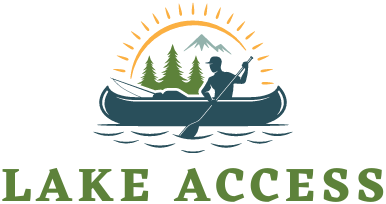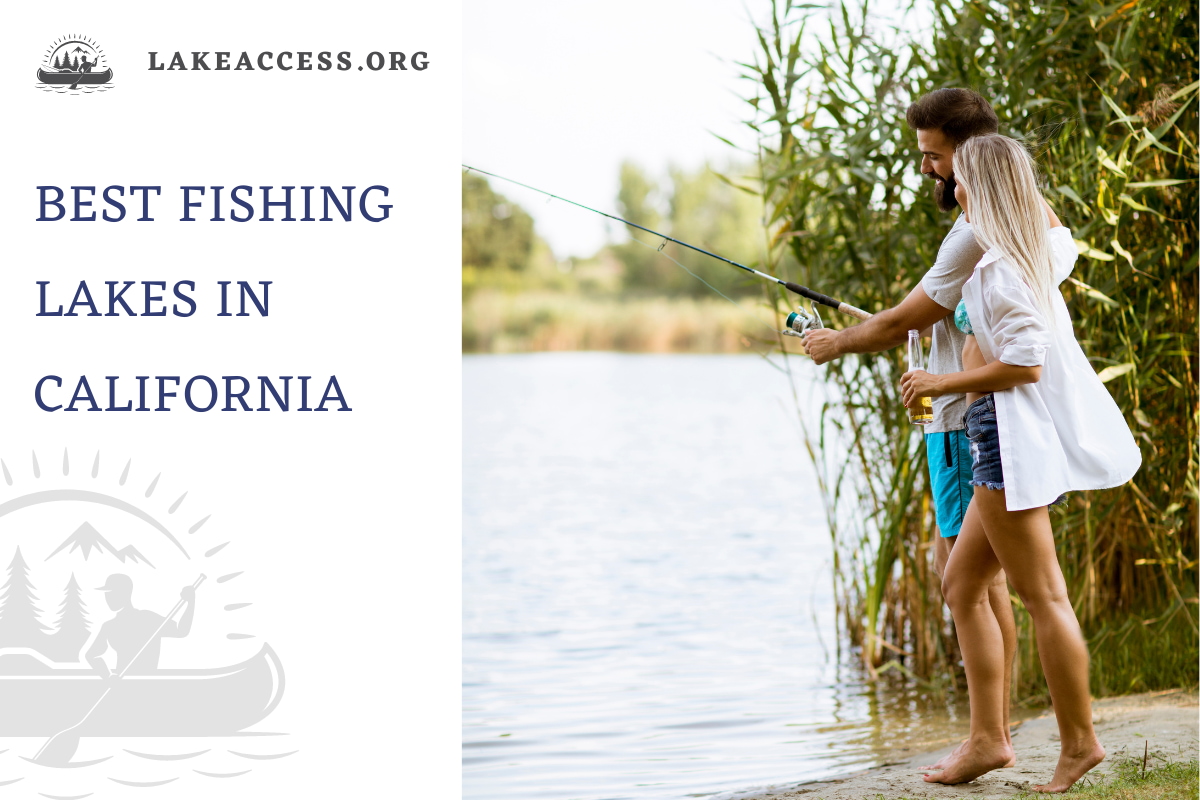California is widely celebrated for its breathtaking natural wonders and the bountiful fishing prospects it presents. With an extensive stretch of coastline, meandering rivers, and an array of picturesque lakes, the Golden State stands as an angler’s paradise, offering an abundance of options to choose from. In this comprehensive guide, we will delve into the captivating realm of the 11 finest fishing lakes in California, each showcasing its distinct charm and teeming with diverse fish species. Whether you possess years of angling experience or are a novice seeking to embark on an exciting fishing journey, these remarkable lakes are guaranteed to fulfill your deepest angling desires. Let’s dive in and discover the wonders that await you!
1. Clear Lake
Clear Lake is one of the best fishing lakes in California for many reasons. First, it is the largest inland lake in the Golden State, with an impressive surface area of 44,400 acres, offering plenty of room for anglers from all over to make the most of their experience. It also has two main recreational areas with plenty of structure and cover options, providing ample opportunities for anglers of all levels. Secondly, the lake is home to abundant cold-water fish like rainbow trout, brown trout, kokanee salmon, black crappie, bluegill sunfish, yellow perch, and largemouth bass, making it a haven for bass fishing.
Moreover, Clear Lake has been designated the top-rated bass lake in the nation, and the record for largemouth bass here is an impressive 17.52 pounds. Located in Kelseyville, Lake County, Clear Lake State Park also offers a variety of amenities such as a boat launch, marina, swimming beach, 149 developed campsites, four campgrounds, and 2 group campsites.

2. Don Pedro Reservoir
Don Pedro Reservoir is one of the best fishing lakes in California due to its ideal habitat, climatic conditions, and abundance of aquatic life. The reservoir was formed from the New Don Pedro Dam and is home to an impressive variety of fish, including largemouth and smallmouth bass, rainbow trout, and catfish. Anglers can find trophy bass in the coves and shallow areas of the lake, where there are plenty of underwater covers for the fish to hide. Flemming Meadows and Jinkins Point are popular spots for bass fishing.
In addition, Prado Regional Park has plenty of shore access, which offers pedalboat rentals, fishing workshops, and derbies. Los Vaqueros Reservoir is also known for its excellent trout fishing, with rainbow trout stocked throughout the year and striped bass on occasion. Finally, San Pablo Reservoir is an excellent spot for rainbow trout fishing and is surrounded by the San Pablo Reservoir Recreation Area.
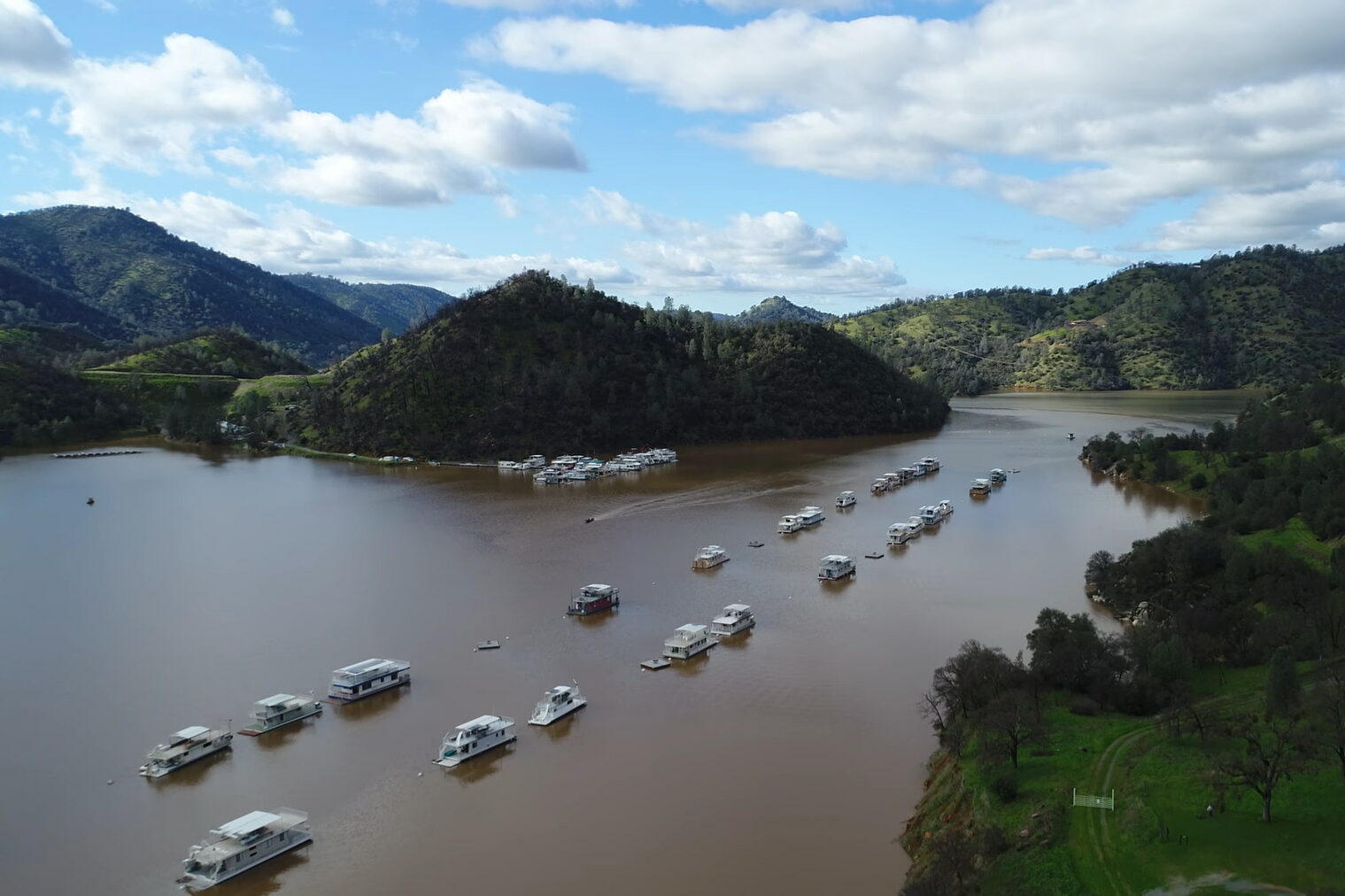
3. Lake Shasta
Lake Shasta is one of the best fishing lakes in California because of its impressive size and abundance of fish resources. Spanning 45 miles long, with a surface area of just under 30,000 acres, Lake Shasta is the largest reservoir in California. It offers a variety of cold-water fish, such as rainbow trout, brown trout, kokanee salmon, black crappie, bluegill sunfish, yellow perch, and smallmouth bass. This makes it an ideal destination for anglers looking to catch big fish with their family or friends.
The lake is divided into four significant arms, so it can be difficult for even experienced anglers to find trout in the vast lake. However, the areas around Big Backbone Creek, Dry Fork, and Little Squaw Creek are known to have populations of large rainbow trout, especially in spring before the lake begins to warm up.
During the hotter months of the year, the best way to catch fish is to troll near the dam, as this can often lead to a strike after hours of nothing. Shoreline fishing is also available in some areas, such as Jones Valley and Silverhorn.
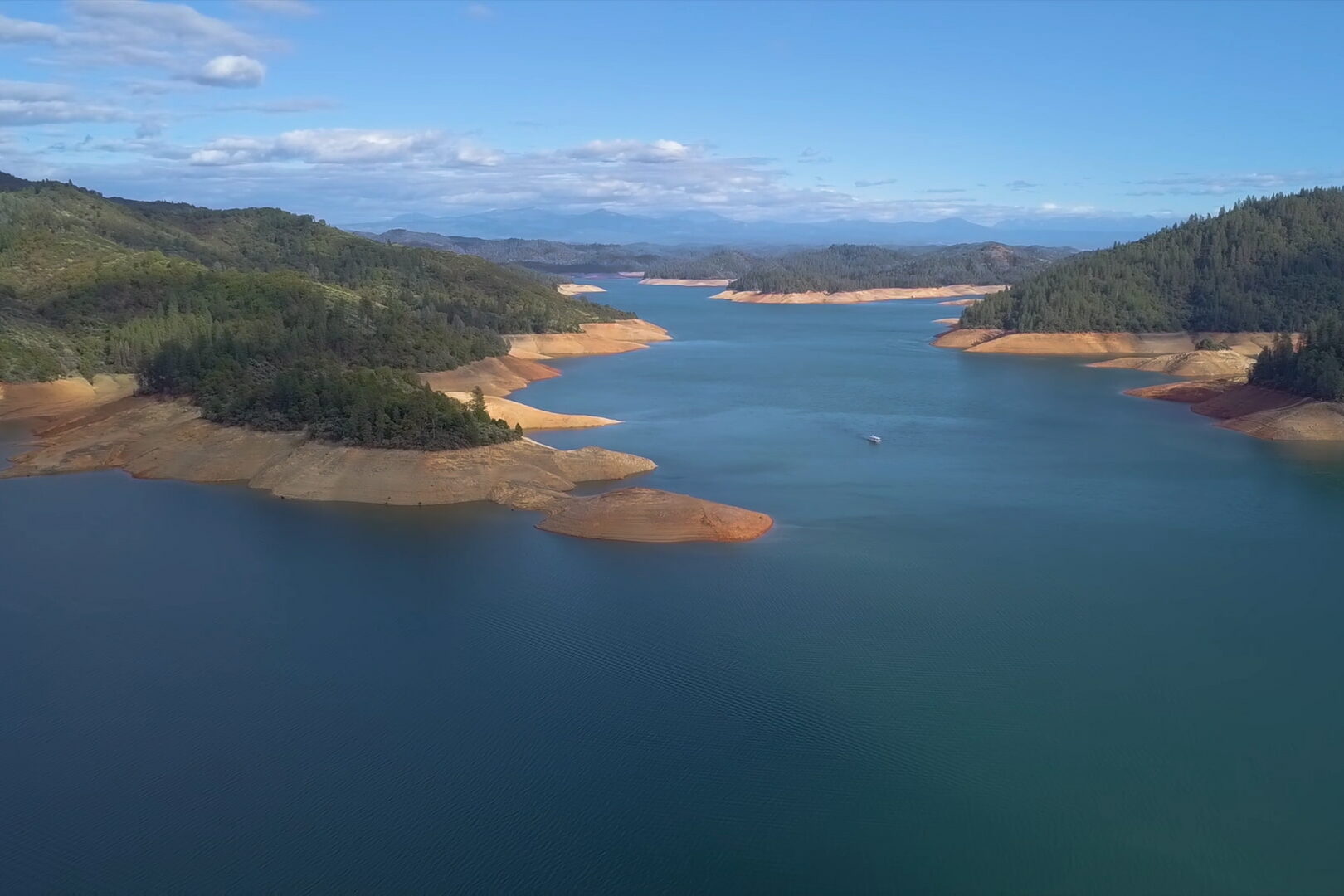
4. Lake Berryessa
Lake Berryessa is widely considered one of the best fishing lakes in California, and there are a few reasons why this is the case.
Firstly, the lake is located in Northern California’s Napa County wine region, so it offers excellent accessibility from both the Bay Area and Sacramento. Furthermore, the lake boasts an impressive 22 miles of shoreline and 21,000 acres of surface area, making it one of the largest lakes in the region.
The lake also has a wide variety of fish species for anglers to try their luck with. These include small and largemouth bass, rainbow trout, spotted bass, bluegill, kokanee salmon, and catfish. Some of the lake’s larger fish, such as bass and catfish, have been known to reach up to 30 pounds, and the lake has also produced several largemouth basses weighing at least 10 pounds, including a lake record of over 17 pounds.
These fish can be found in many different places around the lake, including in main-lake spits, bushes, weeds, and woods, as well as in deeper water and coves. Fishers can also find success in quieter areas such as Paradise Cove and Markley Cove or at the south end of the lake close to the dam in Markley Cove.
Additionally, Lake Berryessa is popular with boaters, kayak anglers, and water skiers during the summer, so visitors can enjoy all the lake offers.
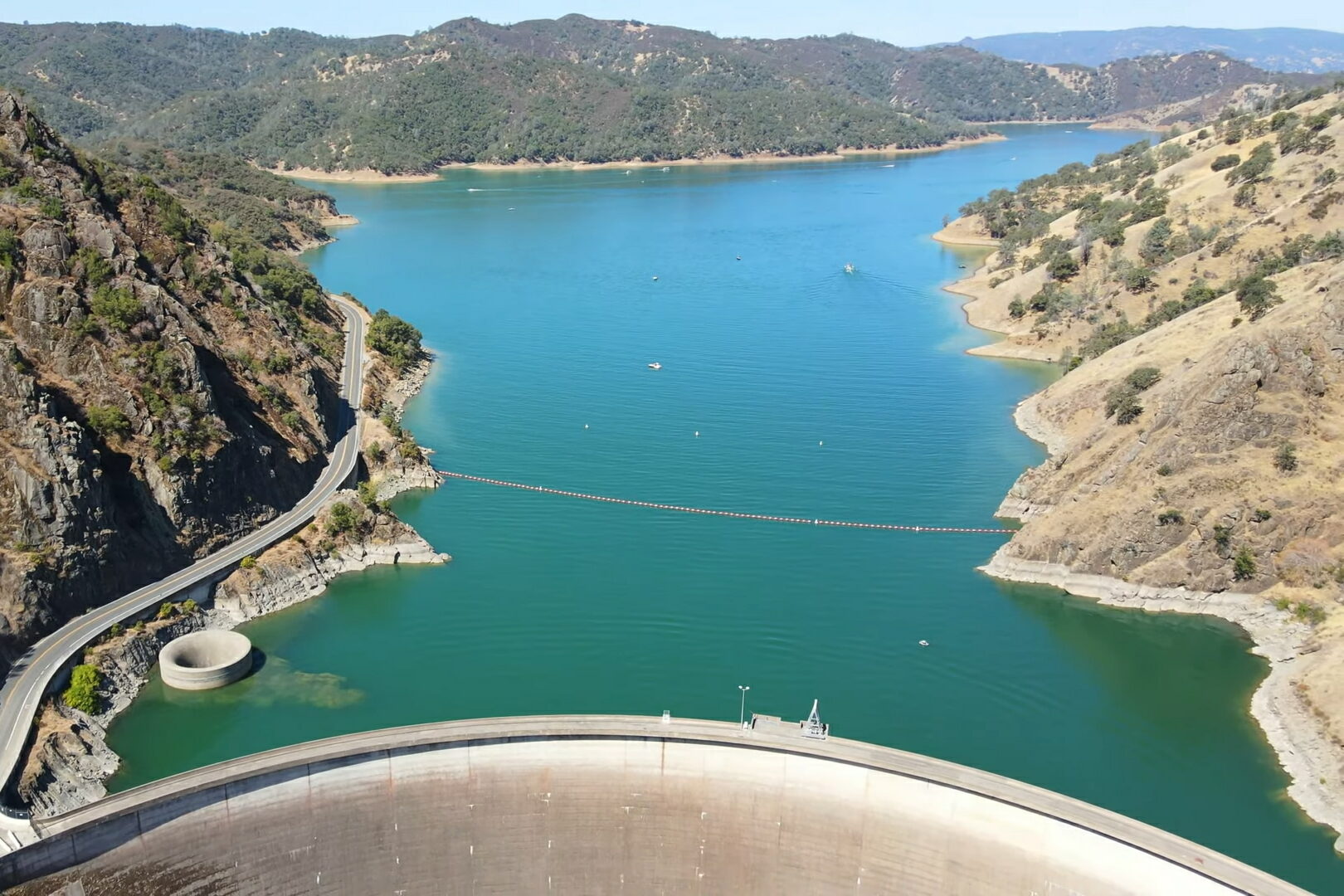
5. Lake Tahoe
Lake Tahoe is one of the best fishing lakes in California for several reasons:
- It spans a significant surface area of 122,000 acres, making it ideal for anglers seeking ample space and seclusion.
- It’s a year-round cold water system allowing a thriving trout population. The Lake Tahoe Sport Fishing Fleet also offers guided charters for a more active experience.
- Lake Tahoe is a beautiful destination situated in the Sierra Nevada Mountains, straddling the border between California and Nevada and offering stunning views.
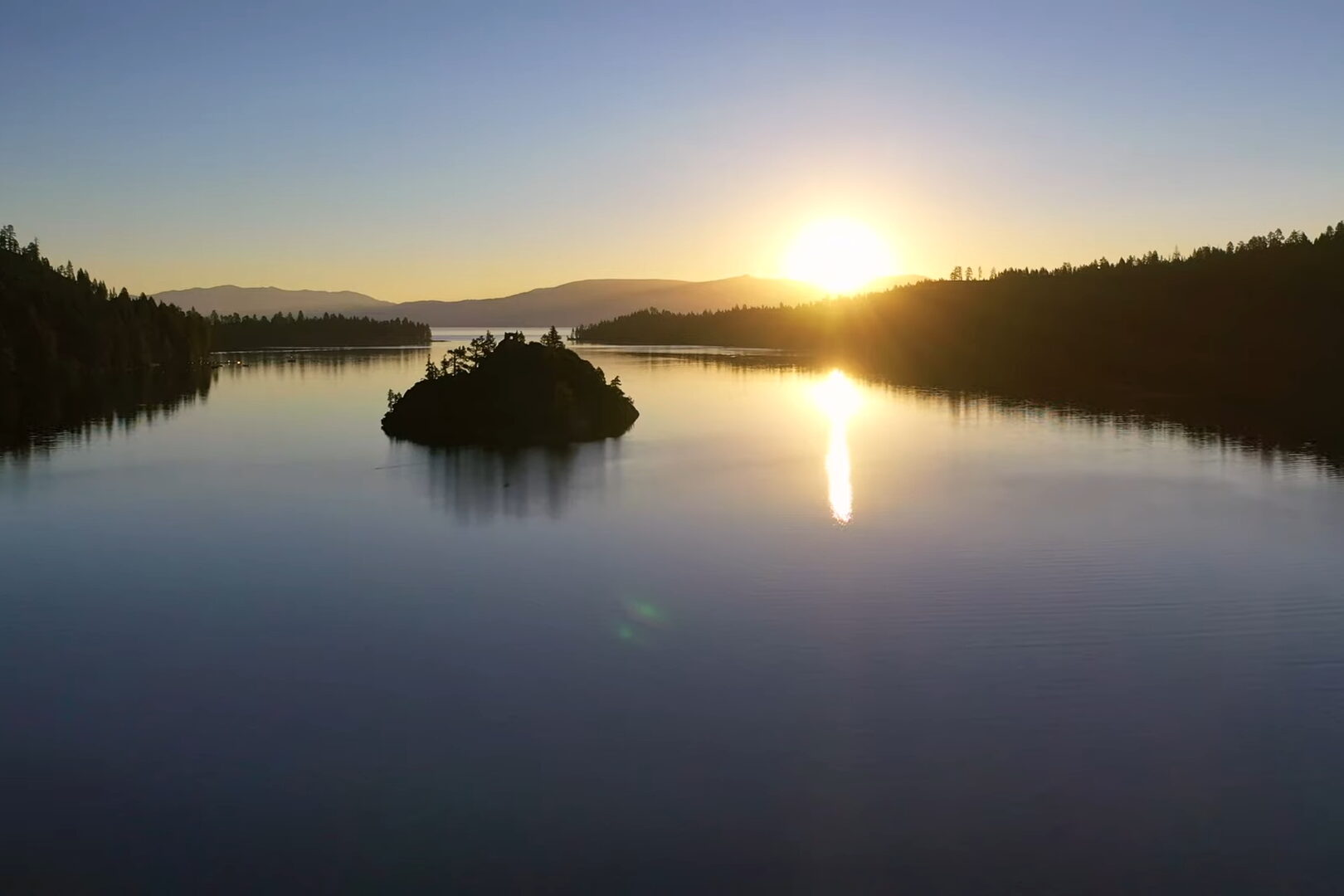
6. Lake Oroville
Lake Oroville is one of the best fishing lakes in California due to its vast population of warm and cold-water fish, including bass, crappie, catfish, rainbow trout, and kokanee salmon. It also has an impressive surface area of over 15,800 acres, making it the second-largest water body in the state. The banks are great fishing spots, with fallen trees and rocks providing cover for the fish. The Middle and South Forks are also excellent areas for bass fishing. Spring is an ideal time to fish; you can use crankbaits and spinnerbaits to elicit a reflex strike from the fish. The lake is also located in scenic Butte County, roughly 70 miles north of Sacramento, and is home to one of Northern California’s famous ‘fog pockets.’
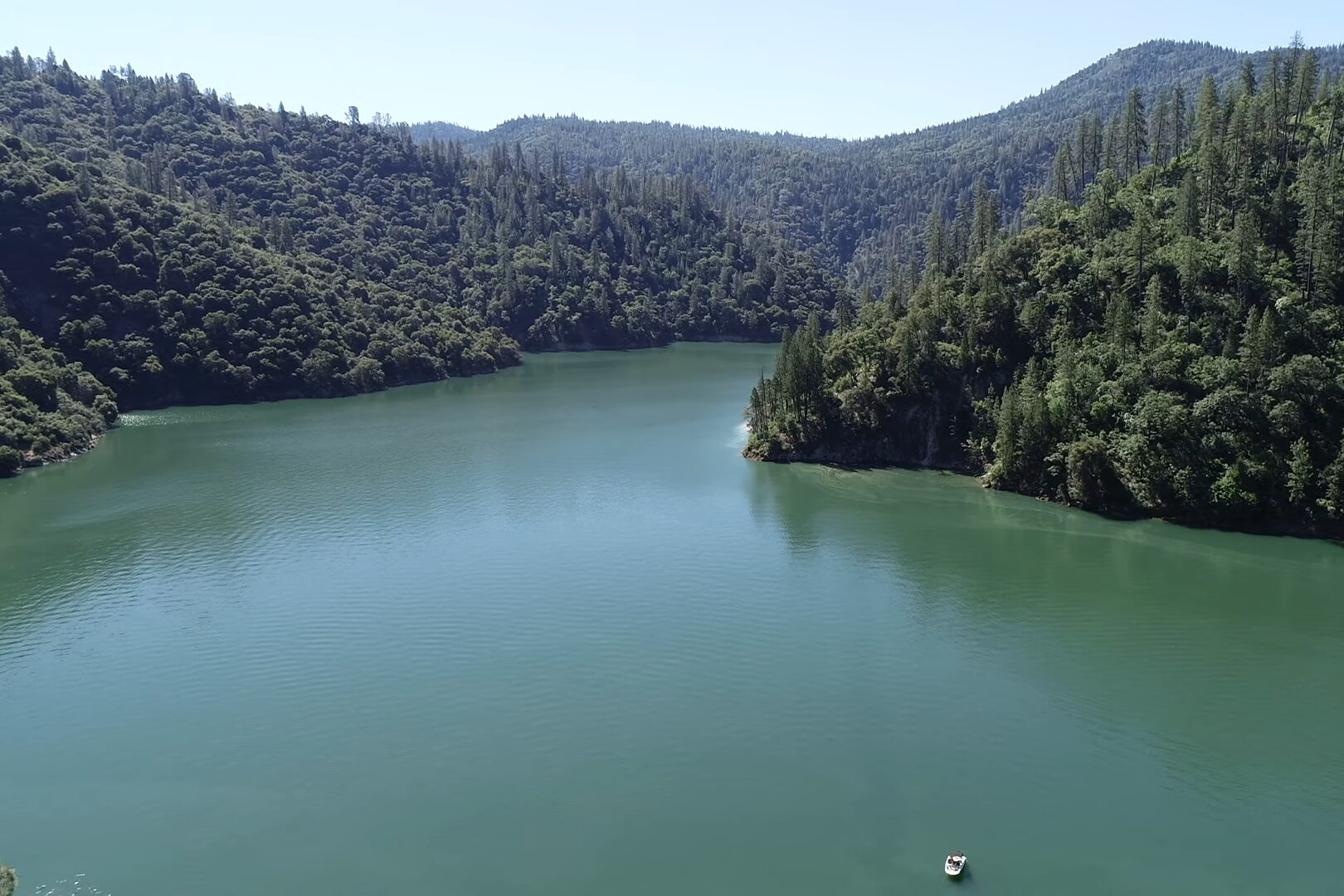
7. Lake Almanor
Lake Almanor is one of the best fishing lakes in California, thanks to its incredible size and diverse fish population. Spanning 28,000 acres of water with a total pool and 55 miles of shoreline, it is the largest lake in Northern California and a true paradise for anglers. Its abundant and varied fish species can provide an unforgettable experience for any angler.
In Lake Almanor, you can find rainbow trout, brown trout, kokanee salmon, smallmouth bass, largemouth bass, bluegill sunfish, yellow perch, and black crappie. You can find trophy fish like the 10-pound rainbow trout and 16-pound brown trout. You can also find landlocked kings and braggin’-sized brown trout. Furthermore, it is an excellent spot for fly anglers, as it has a flourishing Hex hatch which brings plenty of smallies to the lake.
Lake Almanor is also located in a beautiful area of northern California, making it a scenic destination. The lake is situated within the Lassen National Forest and surrounded by mountains, making for an unforgettable experience for anglers looking to enjoy nature at its finest.
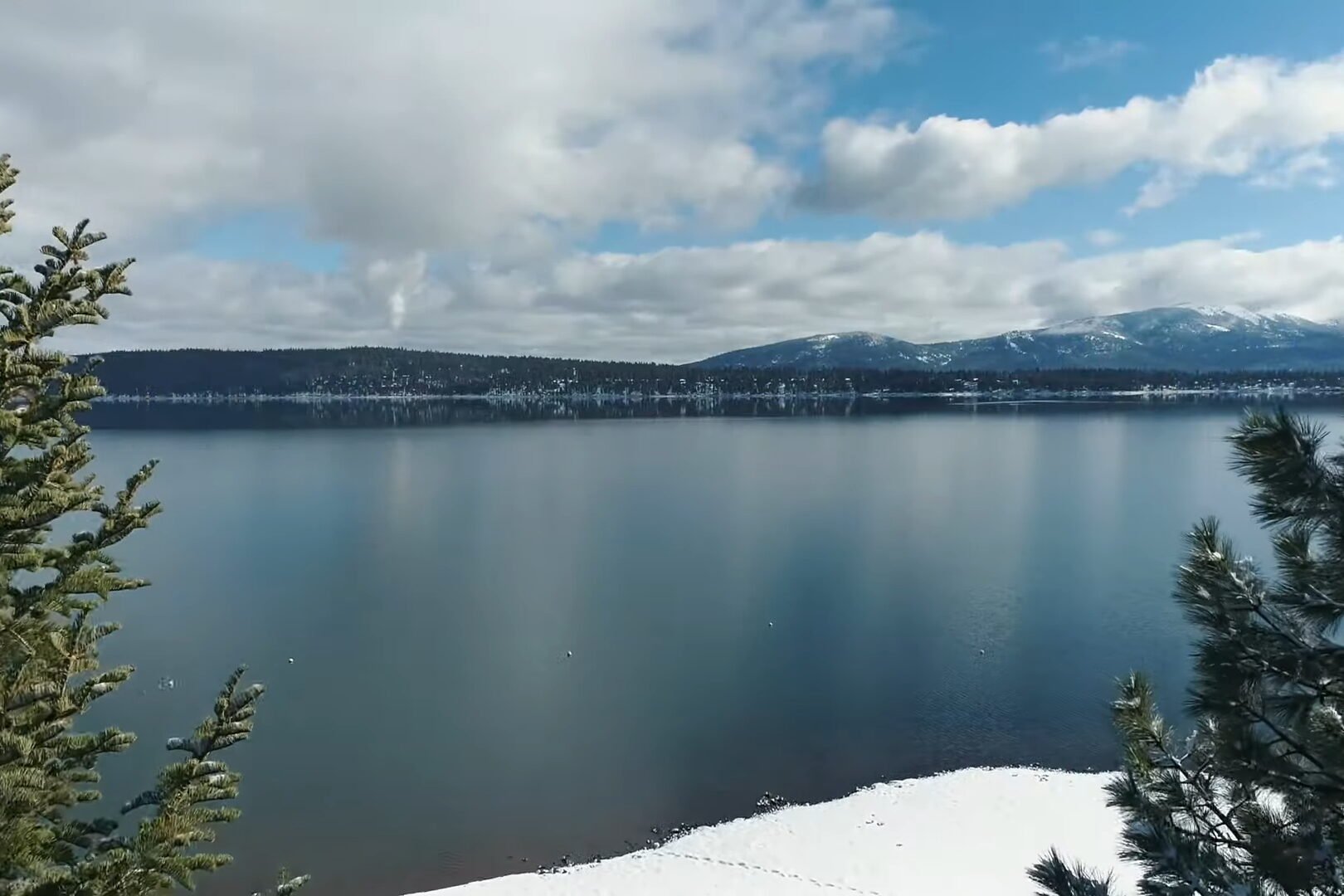
8. Lake Hodges
Lake Hodges is one of the best fishing lakes in California for various reasons. Firstly, it is situated 31 miles outside of Downtown San Diego, providing an easy escape from the hustle and bustle of the city. Additionally, it borders the city of Escondido, making it conveniently located for many. The lake is home to various fish, including largemouth bass, channel catfish, and crappies. The minimum size of the bass taken home is 15 inches, with a maximum of five basses you may take out of the lake. Not only can anglers enjoy traditional bass fishing, but they can take part in the Diamond Valley Lake bass population by fishing in Hodges. Lastly, the lake is not often crowded due to its small size and fishing pressure, making it an ideal spot for anglers seeking tranquility. These factors make Lake Hodges one of the best fishing lakes in California.
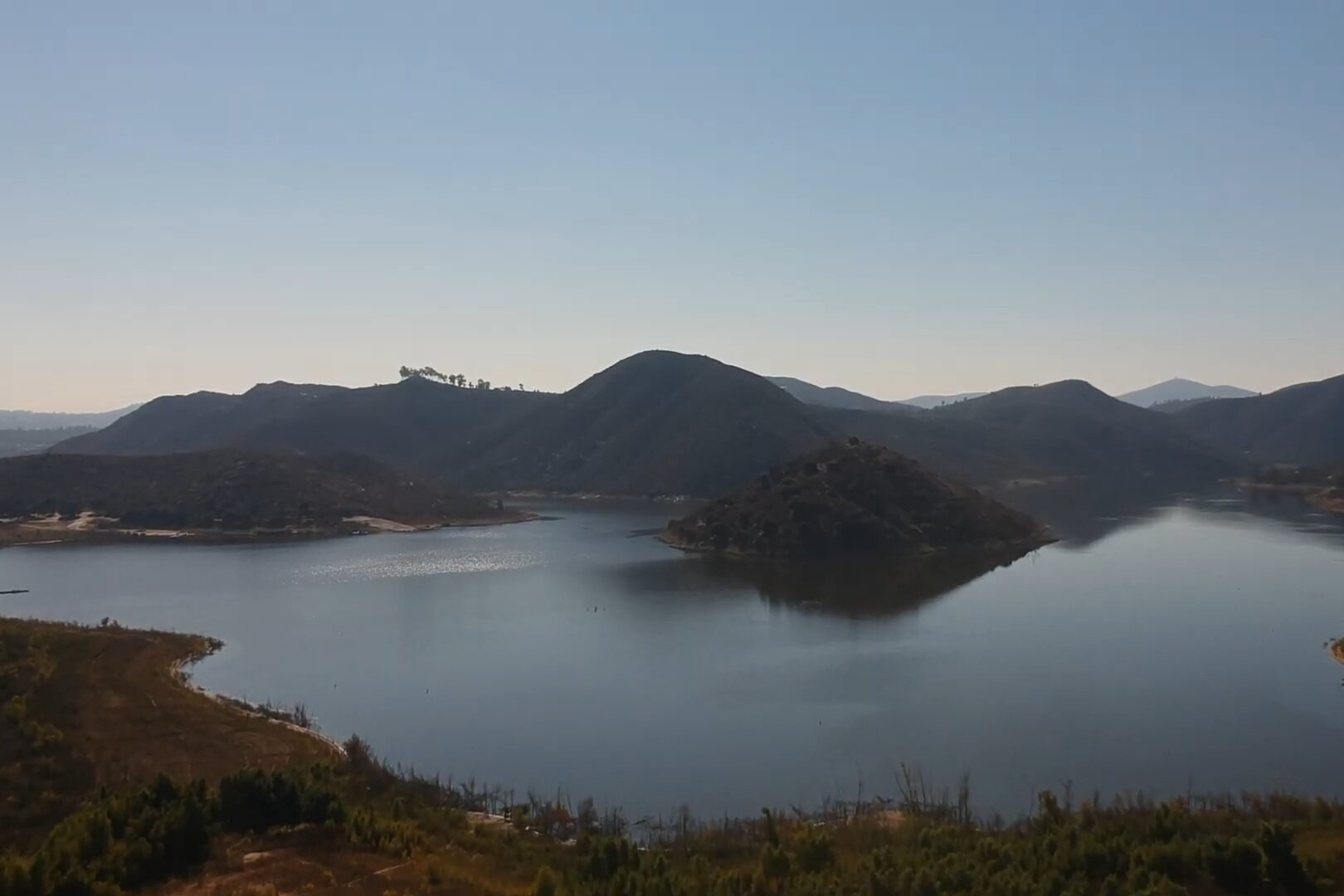
9. Donner Lake
Donner Lake is one of the best fishing lakes in California due to its expansive size, diverse habitat, and abundance of fish species. Located in Plumas County, the lake has an impressive surface area of over 29,000 acres with 16 miles of shoreline. It is surrounded by the stunning scenery of the Lassen National Forest, making it a perfect spot for fishing. The lake is home to much cold-water fish, including rainbow trout, brown trout, kokanee salmon, smallmouth bass, largemouth bass, bluegill sunfish, yellow perch, and black crappie. Anglers can enjoy a variety of techniques such as fly-fishing, Stillwater fly-fishing, and small shiner-imitating spoons. The lake also offers great boating, swimming, skiing, and hunting opportunities.

10. Lake Cuyamaca
Lake Cuyamaca is one of the best fishing lakes in California for several reasons. Firstly, the lake has up to 45,000 rainbow trout annually, so anglers will always find something to catch. Moreover, the consistent temperatures in San Diego County mean you can fish here all year round.
In addition to this, Lake Cuyamaca is also home to the only legitimate population of sturgeon and smallmouth bass in San Diego County. You won’t find this at other local reservoirs, making it the perfect spot for a unique fishing experience.
The lake is located in the scenic Cuyamaca Mountains and is only an hour’s drive away from San Diego. This makes it the perfect location for a fishing trip, as you can enjoy the beauty of the mountains while catching some of the best fish in the state.
The lake also offers plenty of shoreline access with gently sloping banks and several access points, docks, fishing floats, and a paved launch ramp for private boaters. Lakefront camping options are also available, as well as restaurants and mini-marts where you can buy drinks and snacks.
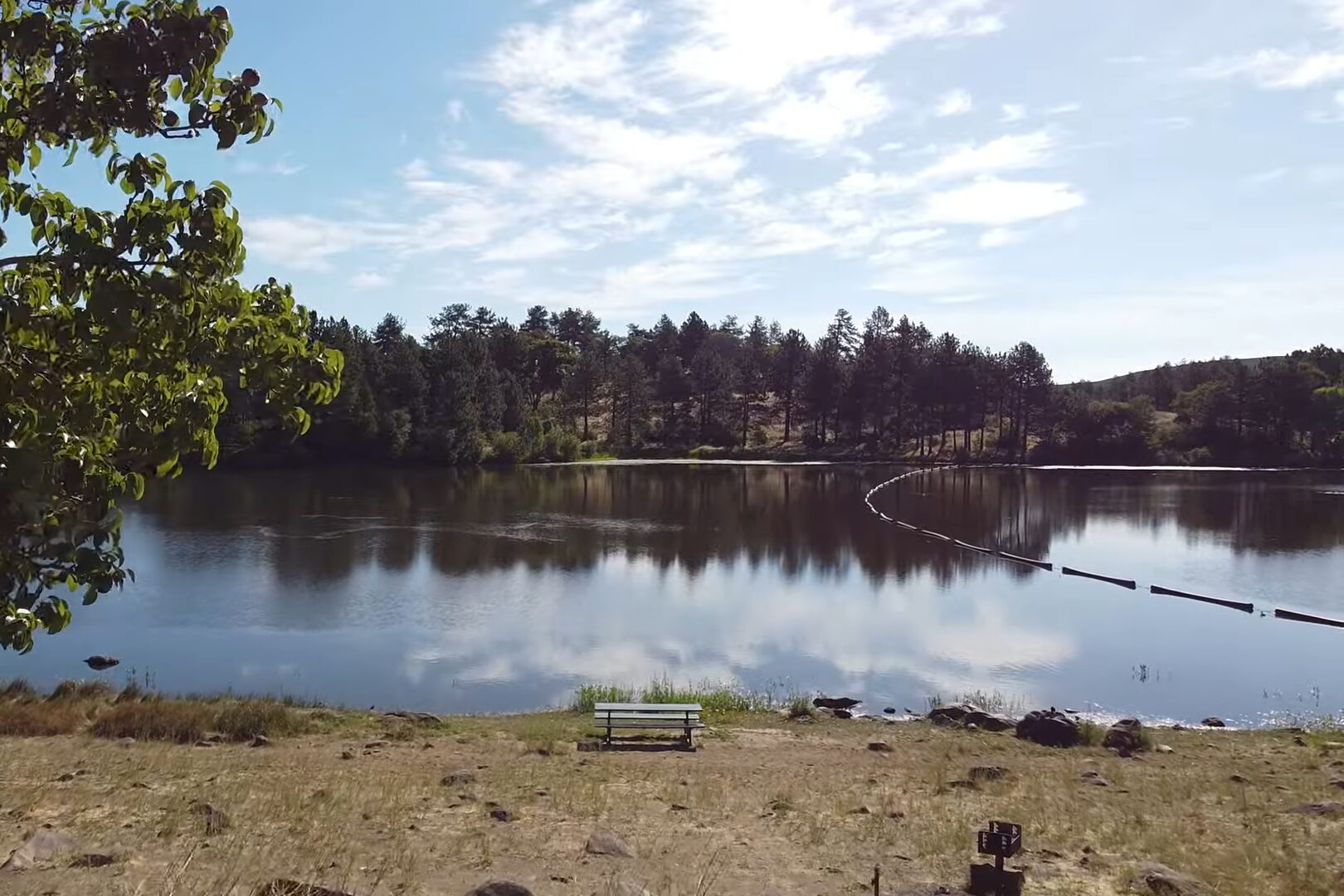
11. Pyramid Lake
Pyramid Lake is a reservoir located in Los Angeles County, California. It is known for its beautiful surroundings, crystal clear water, and diverse fish population. The lake is particularly popular among anglers, as it is home to a variety of fish species, including striped bass, largemouth bass, catfish, and rainbow trout.
Fishing at Pyramid Lake can be a rewarding experience, but it requires some preparation and skill. Anglers should come prepared with the right equipment, such as rods, reels, and bait, that are appropriate for the target fish species. The lake is stocked with rainbow trout, particularly abundant during the winter months and a popular target for many anglers.
Striped bass is also a popular fish at Pyramid Lake and can often be caught using a variety of lures and baits, such as crankbaits, swimbaits, and live bait. Largemouth bass and catfish are also present in the lake and can be caught using drop-shotting, flipping, and pitching techniques.
One of the unique features of fishing at Pyramid Lake is the use of float tubes, which are inflatable devices that allow anglers to fish from the water. These are particularly popular among anglers targeting striped bass, as they can be used to access deeper water where these fish often congregate.
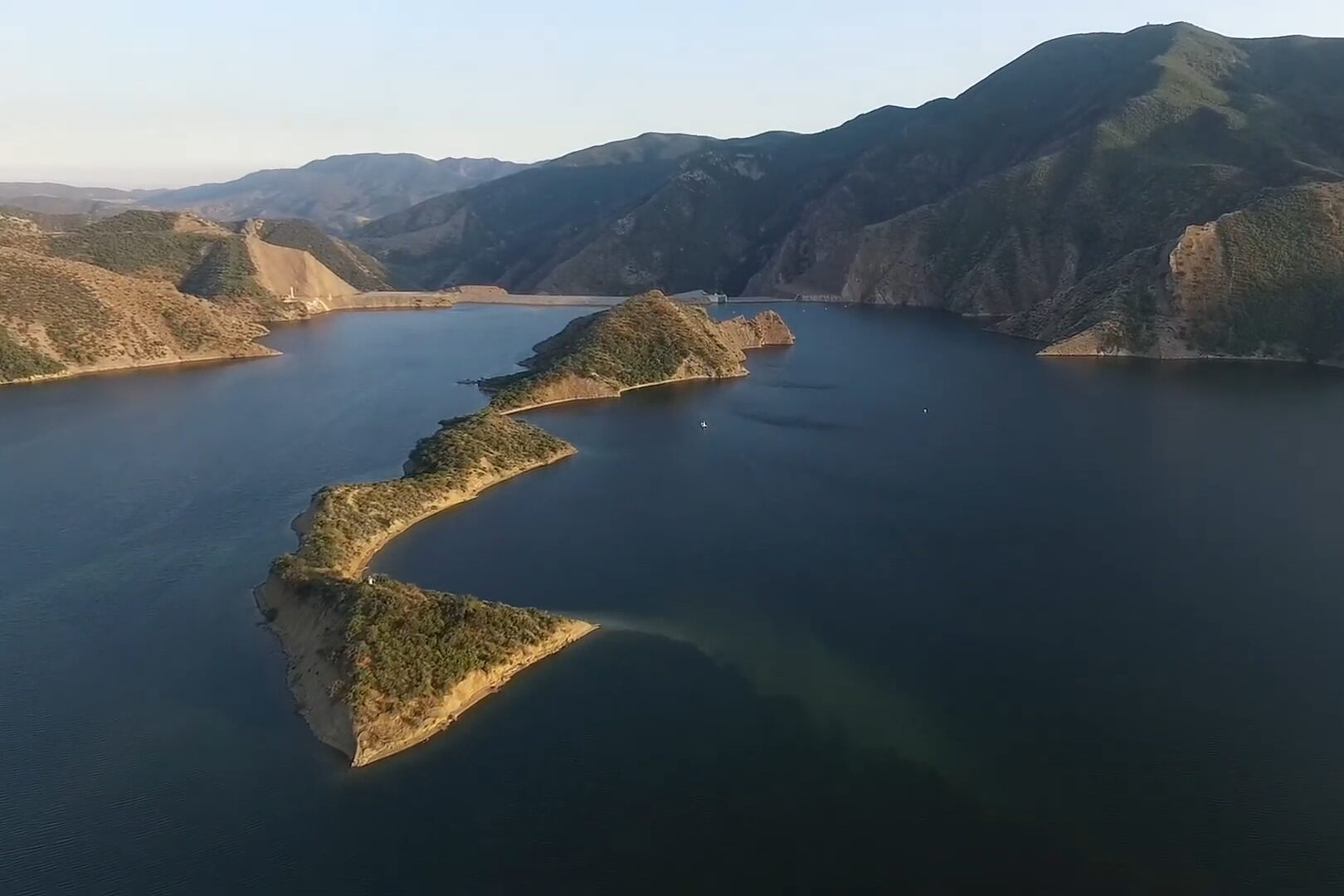
FAQs
Do I need a fishing license to fish in California?
Yes, you need a fishing license to fish in California, except if you’re fishing off a pier in ocean waters. All anglers aged 16 or over must have a valid fishing license to fish in California, which helps fund conservation efforts in the state. Depending on the type of fishing you plan to do, you may also need to purchase special report cards for certain ocean species.
What types of fish can I catch in California lakes?
In California, freshwater fishing is a popular pastime, and a variety of fish species can be caught in the state’s many lakes, streams, and reservoirs. Some of the most popular species to be found include largemouth bass, smallmouth bass, spotted bass, channel catfish, flathead catfish, blue catfish, white catfish, black crappie, white crappie, walleye, rainbow trout, brook trout, brown trout, lake trout, bluegill, green sunfish, pumpkinseed sunfish, redear sunfish, white bass, striped bass, and steelhead.
Chinook Salmon can be found in the rivers and streams in the fall runs, with catches of up to 30 lb being possible. Striped bass can be found in San Francisco Bay in the winter and up the Sacramento River and California Delta in the spring. White Sturgeon can be found in the rivers of Northern California in January and February and can grow to be up to 12 feet long and weigh hundreds of pounds. Halibut, Rockfish, Lingcod, and White Seabass can be caught in the ocean. Dungeness Crab can also be caught in winter and spring for a delicious seafood dinner.
Is there any size or catch limits on fish in California lakes?
Yes, there are size and catch limits for fish in California lakes. The Department of Fish and Wildlife has guidelines for the size and number of fish that can be caught from each lake. For example, Clear Lake has a limit of two basses over 15 inches per day and a size limit of 16 inches for bass. And in the Don Pedro Reservoir, the limit is two bass over 18 inches per day, and the size limit is 24 inches for bass. Additionally, there are limits for the number of other species, such as trout, kokanee, and crappie, in many of the lakes. Generally, anglers must follow all applicable regulations and check the specific regulations for each lake to ensure they adhere to the size and catch limits.
What kind of fishing gear should I bring to a California lake?
If you’re targeting trout, then you’ll want to bring a spinning rod, reel, and line. You’ll also need a variety of lures and baits, including spinners, spoons, worms, and power bait. You may also want to bring a net and a pair of forceps for handling the trout.
If you’re fishing for bass, you’ll need a spinning or casting rod, depending on the type of water you’ll be fishing in. You’ll need crankbaits, spinners, lipless crankbaits, and jigs. You’ll also need a reel, line, and a variety of lures and baits. You should also bring a net and a pair of forceps.
Other fishing equipment to consider packing includes a landing net, hooks, sinkers, bobbers, line cutters, waders, and polarized sunglasses. A small tackle box and a first aid kit are also essential.
What is the best time of year to go fishing in California?
The best time of year to go fishing in California depends on what species you’re after. Generally, spring is the most popular time for bass fishing, as the water temperatures are ideal for catching largemouth bass. However, winter can also be a great time to target largemouth bass, which may be more active in the colder months. Trout fishing is prevalent throughout the year but peaks during summer when the waters are warm. For the ultimate fishing experience, head to Lake Tahoe in summer, when you can catch huge mackinaw trout.
Are there any specific rules or regulations I should know before fishing in California?
Yes, the state has several regulations that all anglers should know. All anglers aged 16 or above must have a valid fishing license, except for those fishing from a public pier in the ocean or bay waters. Those under 16 or anglers fishing on the state’s Free Fishing Days must still purchase appropriate report cards depending on the species being fished. Other regulations include limits on possession, fishing methods, bait, hours, and more. It’s also important to note that, in some cases, special report cards may be required for species such as Sturgeon and Steelhead. Similarly, some parks and counties have their own licensing regulations. Always check the California Department of Fish and Wildlife website’s fishing information page for more detailed information.
